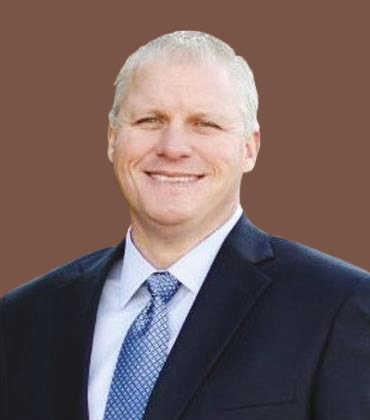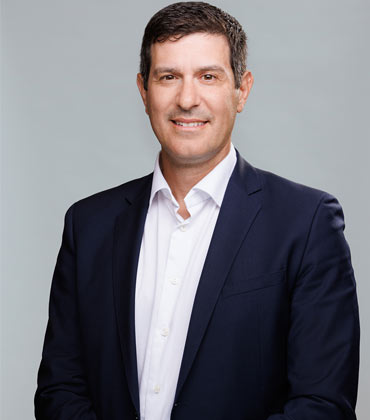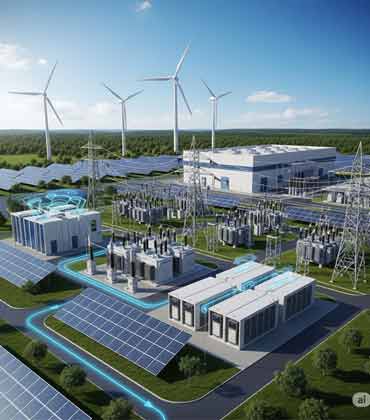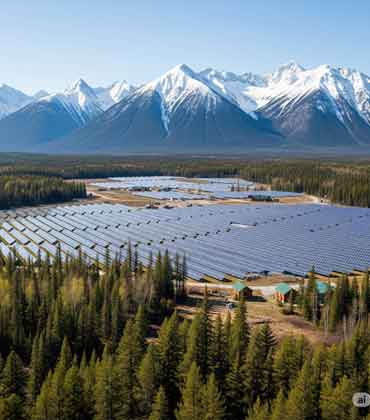Thank you for Subscribing to Energy Business Review Weekly Brief
In solar power development, success isn’t assembled in silos—it’s engineered from the ground up. Here, true progress demands coordination and control at every turn from early design to long-term field performance. While most players contend with fragmented workflows or third-party dependencies, Voltarix takes a different approach. This Canadian renewable energy corporation begins every project not with delegation, but with direct ownership of the process, timeline and the outcome. Since the company manages every phase in-house from concept to grid connection, it ensures full control over quality, cost and execution. The vertically integrated model powers large-scale and distributed solar projects enhanced by smart grid and battery storage technologies for greater efficiency, reliability and sustainability. This strong foundation of technological integration is matched by an equally well-developed internal structure. At the heart of Voltarix’s story is its in-house expertise, rooted in electrical mastery and data-backed decision-making. The company doesn’t outsource the early-stage planning, doesn’t rely on external land agents or wait around for third-party estimations. Voltarix’s internal team, composed largely of individuals with deep electrical backgrounds, leads the charge and drives everything from site selection to real-time construction cost assessments. This internal cohesion allows the company to move with exceptional speed and accuracy which is a major advantage in a market shaped by shifting energy policies and tight timelines. “In the development world, timing is everything,” says DeBruin, president. “Relying on third parties and facing delays can cause significant setbacks—something we avoid by handling everything in-house, ensuring projects stay on track.” From Field to Finish Everything starts with the land. Voltarix’s engineering team is equipped with a deep understanding of what makes a site viable and handles land acquisition directly. The company’s approach is binary: either a site fits their strict criteria or it doesn’t. No emotion, no guesswork. That mindset, backed by real-time capital cost assessments and deep familiarity with local interconnect requirements, means only the most viable projects move forward.
Turbomachinery Package Service 2025
Relevant Power Solutions (RPS) is a diversified power company specializing in aero-derivative gas turbines. It delivers cutting-edge power and turbomachinery solutions tailored for the power generation and gas compression markets. An industry leader in the energy space, RPS is the designer, engineer, packager, installer and operator of the world's largest mobile gas turbine package—the Siemens SGT-A45. It packages a variety of other turbines with capacities ranging from 17.4 to 44 Megawatts, tested at its 12-acre facility in Houston, Texas. The company also maintains an extensive inventory of power plant equipment that ranges from power and auxiliary transformers and switchgear to circuit breakers and compressed air systems. “The designs we implement in our product range allow clients to utilize our products to meet their near and long-term goals without driving the price,” says Rusty Bonnett, VP of global operations at Relevant Power Solutions. Reliability and robustness are a hallmark of RPS’ solutions. Regardless of the environment where the equipment operates or the number of times they are moved, its products provide optimal results throughout their lifespan. Its very first unit was dispatched to a customer demanding high reliability. Within the first seven months, the product remained operational for a total of 4,200 hours while being moved ten times during that same period. RPS covers the operations, engineering, procurement and construction (EPC) support and service support beyond offering its products. This capability enables the company to operate and maintain power plants of all sizes, types and makes. From configuring state-of-the-art products to ensuring seamless operations and providing top-notch service support, RPS meets and exceeds client expectations. Whether it's designing bespoke equipment or optimizing existing installations, the company leverages its expertise to offer turnkey solutions that align with client objectives.
Solar Panel Company 2025
Wasatch Energy Group understands that solar energy is not a one-size-fits-all solution. Whether for a multifamily development, a small commercial office space or a vast warehouse, the company offers scalable solar solutions tailored to each project’s unique needs. Operating across California, Utah and Texas, it recognizes that each state’s regulatory environment for solar power is distinct and constantly evolving. This complexity makes it crucial for both homeowners and businesses to be informed about local regulations when considering solar installations. Wasatch Energy Group excels at this by staying on top of federal, state and utility-based regulations and incentives. It leverages additional benefits introduced by programs like the Inflation Reduction Act (IRA) to ensure clients maximize their solar investments. With a proven ability to secure grants and additional bonus credits, such as those provided by the U.S. Department of Agriculture (USDA) and Department of Energy (DOE), the company broadens the scope of financial opportunities available to clients. [CIOS_QUOTES_REPLACE]Wasatch Energy Group takes a proactive approach to energy planning. While most solar installers design systems based on a standard 12-month energy consumption review, this company looks further, in some cases analyzing 8760 reports (8760 hours in a year) and as far back as two to three years if needed. It’s this long-term perspective that enables Wasatch Energy Group to design systems aligned not just with current energy needs but with clients’ future energy demands and business growth strategies. Considering how a client’s energy consumption might change over time, Wasatch Energy Group creates solar solutions that adapt as the business scales, ensuring that energy systems remain efficient and cost-effective over the long term. Often, solar systems are not optimized at installation because key factors like fluctuating energy fees, consumption patterns and long-term utility costs are overlooked. Wasatch Energy Group adopts a more comprehensive approach, evaluating whether an integrated solution involving solar panels, batteries and generators would be most effective. This holistic strategy maximizes energy efficiency, reduces costs and enhances clients’ bottom lines. After installation, Wasatch Energy Group conducts in-person reviews every third week to assess each managed system’s output. Comparing expected performance with actual results, any deviation beyond normal weather variations is addressed swiftly by an on-ground team. This proactive approach ensures clients get the full value of their investment.
CXO INSIGHTS

With the Right Rules, Energy Storage Can Take the Power Grid to the Next Level
Todd Hranicka, Director - Energy Services, Public Service Electric & Gas Company

Unlocking A Clean Energy Future
Bill Quinlan, President of Transmission and Offshore Wind Projects, Eversource Energy

Renewable and low-carbon gases are a viable avenue towards a cleaner energy future
Joe Mazza, Vice-President of Energy Supply and Resource Development, FortisBC

Building an HR Department for Maximum Impact
Charlie Hoock, President - Energy Services, NAES Corporation

Creative Procurement Solutions
Ken Jones, Senior Director of Business Services, EPB

Navigating the Tides of Change in the Natural Gas Industry
Mark Reese, Vice President, U.S. Natural Gas Supply, Just Energy

Charting the Path to Hydrogen Economy for a Sustainable Tomorrow
Henry Hui, Corporate VP, H2 Strategy & Energy Infrastructure, Nikkiso Clean Energy & Industrial Gases
IN FOCUS
Battery Storage & Grid Integration: Building Resilient Energy Systems in Canada
Canada is prioritizing battery storage to support its transition to renewable energy, aiming for a resilient grid and net-zero emissions by 2050 through the effective implementation of energy management solutions.
Canada's Evolving Solar Ecosystem and Innovation Edge
Canada is enhancing its solar power capacity through supportive policies and technology, making significant strides in renewable energy while promoting economic growth and environmental sustainability.
EDITORIAL
Harnessing the Next Era of Clean Energy
Canada’s energy landscape is undergoing a profound shift. Ambitious climate commitments, evolving regulatory frameworks, and rapid technological innovation are converging to reshape how renewable energy is developed, integrated, and delivered. At the heart of this evolution is a focus on precision, speed, and sustainability—hallmarks of the nation’s emerging clean energy projects. The push toward greater energy independence and reduced emissions has placed emphasis on vertically integrated models that streamline every phase of development. Companies adopting this approach manage site selection, engineering, construction, and operations in-house, enabling tighter quality control and faster execution. This level of integration has become critical as projects scale to meet both grid demands and community expectations for affordability and resilience. Advances in grid modernization and energy storage are equally transformative. Smart grid systems and next-generation battery solutions are redefining how renewable resources connect to the broader energy ecosystem, ensuring stability even as weather-dependent generation grows. These innovations help bridge seasonal variability, reduce curtailment, and support round-the-clock energy availability. This edition also features insights from leaders including Jim Helvig, P.E., Vice President of Operations at Dashiell Corporation, and Moses Thompson, President at Liberty, whose perspectives reflect the diverse strategies shaping this energy transition. Their experiences highlight how collaboration across markets and disciplines is driving the next wave of advancements. As the sector accelerates toward a cleaner future, these developments mark more than technological milestones—they represent a fundamental rethinking of how energy systems are built and sustained.










